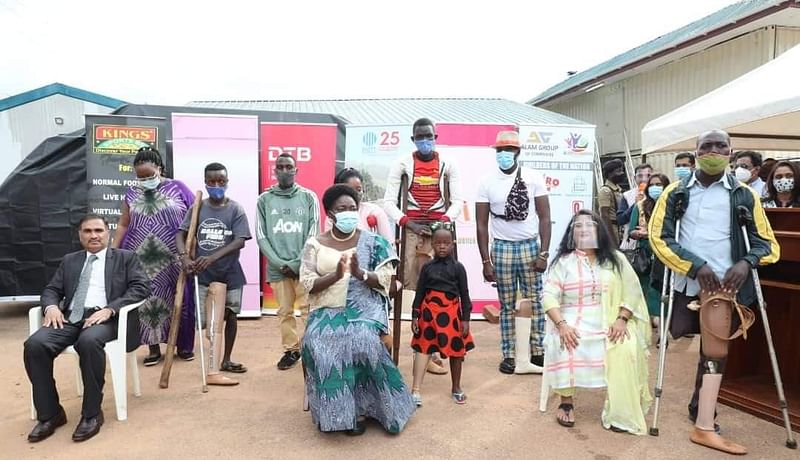Aravind Eye Care to Jaipur foot—India did well in frugal innovation but new innovators needed
– Dr. Rishikesha Krishnan, Director, IIMB, and N Dayasindhu, Founder-CEO, Itihaasa Research and Digital
The locus of frugal innovation has shifted to the government and startups. While this needs to be sustained, industry must partner as well.

In 2012, Nesta, a UK-based not-for-profit innovation foundation concluded that India’s distinctive competence lies in frugal innovation. To reach this conclusion, they cited iconic frugal innovations from India such as Aravind Eye Care that provides low-cost, high-quality cataract surgery; the GE MAC 400, a low-cost, portable ECG machine and the Jaipur foot, affordable, individually-fitted prosthetics. Driving these innovations were different approaches: process reconfiguration, frugal engineering and ‘Gandhian innovation’, respectively.
Frugal innovation is a result of process reconfiguration — reviewing the entire process of production or delivery for opportunities to use scarce resources better and reduce costs. Frugal engineering is a clean-sheet approach to product development that aims at maximising value for the customers while minimising non-essential costs. C. K. Prahalad and R. A. Mashelkar’s concept of “Gandhian innovation” is driven by affordability and sustainability, rather than premium pricing and abundance approach.
Where are we a decade later? Has India lived up to its reputation? What does India need to do to take frugal innovation to the next level?
Is innovation from Indian industry getting scarce?
When we recently drew up a list of top innovations in India during the 2011-20 decade and compared it with the top innovations in the preceding decade, we found some interesting differences. We didn’t see many visible, big-ticket innovations from large Indian companies or MNC research laboratories in India during 2011-20. Instead, what stood out were public platforms like Aadhaar, the Unified Payment Interface (UPI) and the Government e-Marketplace (GeM); data- and behavioural science-driven innovations like Niti Aayog’s Aspirational Districts Programme (ADP); and a fusion of frugal engineering and virtual intelligence (through digital technologies) manifesting itself in, like Nirmai’s Thermalytix platform that uses a safe and affordable thermal imaging technology, coupled with machine learning to enable early detection of breast cancer. Many Indians have experienced the benefits of Aadhaar in obtaining direct benefit transfers. UPI is probably the easiest, cheapest and reliable peer-to-peer financial transaction mechanism that was our lifeline during the Covid-19 lockdowns.
These findings suggest that India has the potential to be a leader in frugal innovation going forward but perhaps in a different way from what Nesta identified a decade ago. The creation of public platforms prevents end-to-end monopolies and enhances the ability of startups to build specialised applications meeting the needs of specific segments of users.
Interestingly, these public digital platforms have not been built by traditional public sector agencies but by groups of technical experts on a low-cost, largely pro bono basis. The end product is a public good, which is then managed and maintained by a government agency. This innovation in creating the framework or scaffolding is at the heart of the next generation of frugal innovation in India.
The next generation of “public platforms” that can enable specific solutions is already on the horizon. These platforms include an account aggregator and the national health stack – the former will facilitate consented sharing of personal financial information in real-time that will help enhance access to credit as well as investment management services; the latter will help access health records and process health insurance claims in both private and public systems.
Solving India’s problems with frugal innovation
The locus of frugal innovation has shifted to the government and startups. While this needs to be sustained, industry needs to be a partner as well.
That India needs more frugal innovation is beyond question. Though absolute poverty might have declined from 1947 to 2020, the Covid-19 pandemic has caused many thousands of our fellow citizens to slip backwards. Several reports indicate increasing income inequality with the top decile accounting for more than half of national income. With our per capita income of about USD 2,000, improving India’s human development index is an important goal and possible only with frugal innovation.
India’s innovation capability can be further enhanced by solving the ‘right’ problems, nurturing capabilities in emerging tech areas, creating a new generation of innovators, sharpening industry academia collaboration (through more application driven research in academia and better translation capabilities), enhancing R&D in established firms, creating genuine innovation clusters, and focusing on India’s commitments to climate change.
Source: The Print


